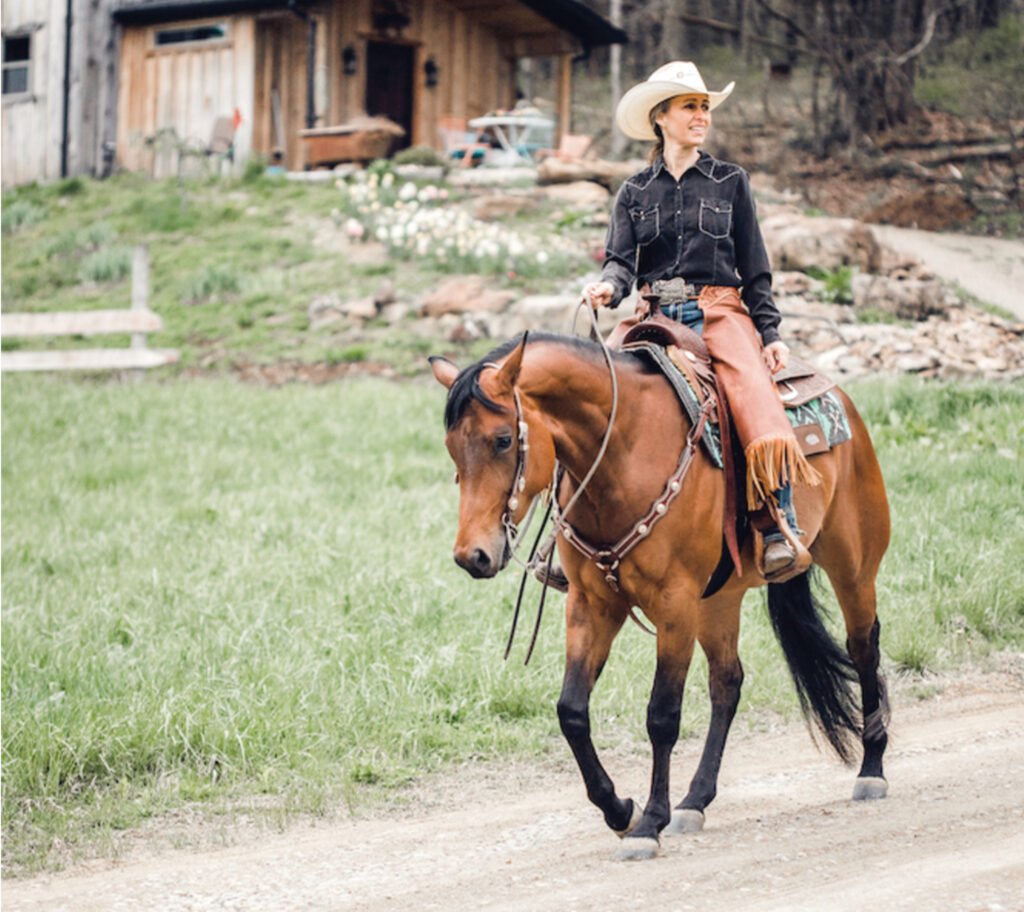Before hitting the trails, it’s important to assess and improve your horse’s fitness level to ensure a safe and enjoyable ride.
Whether you’re looking for relaxation, a break from arena work, new experiences, or a challenge in rugged terrain, evaluating your horse’s fitness is key. Some riders enjoy a leisurely stroll, while others seek adventure.
Regardless of your goals, it’s important to consider your horse’s fitness for trail riding and choose a horse that suits your needs.
When buying a trail horse, factors to consider include your riding skills and goals. Evaluating your skills can help you find a horse that matches your level and preferences.
Before You Buy
Prior to horse shopping, assess your riding skills to find a suitable companion. Consider whether you’re ready for a young horse or would prefer a more experienced mount.
Seeing a potential trail horse in action before purchase can help you determine if they meet your needs and if your skills align with their requirements.
What Are Your Goals?
Determine your goals with your new horse, whether it’s casual rides or competitive trail riding. This will impact the type of horse you need based on the terrain and activities you plan to engage in.
Understanding your riding skills and goals can guide your search for a new horse and help you identify the skills they should possess.
A Solid Foundation
If you plan to tackle challenging trails, look for a horse with basic maneuvers and trail experience. Consider their comfort on the trail and exposure to various stimuli.
For young horses, focus on two-handed steering and standstill cues to support their learning process on the trails.
Basics of Developing Trail Horse Fitness
Condition your horse properly before embarking on trail adventures, considering the level of fitness required for your planned rides. Even seasoned horses need time to build up their fitness.
Ponying an inexperienced horse on the trails can help them adjust to the environment before riding with a rider. Evaluate your horse’s fitness on different terrains and adjust your rides accordingly.

Pay Attention
While conditioning my horse, I have observed that elevation changes can impact his breathing. However, as his fitness improves, his heart rate and breathing gradually slow down.
At this point, I start increasing the distances we ride. Initially, I focus on walking during early rides, gradually progressing to trotting or loping, except on steep hills. By the time my horse is ready for this level of activity, we have already completed numerous base-building conditioning rides. I can notice improvements in my horse’s recovery based on past experiences. Building your horse’s fitness requires patience, as self-control now will yield results in 3 to 4 weeks.
If you notice your horse struggling to breathe at the beginning of a ride, don’t hesitate to dismount and lead him during stamina-building sessions. This skill is often overlooked by trail riders but can be beneficial from both a training and fitness standpoint. Your horse gets a brief break, while you get the chance to stretch your legs and assess your horse from a different perspective. If you have any fear or tension, dismounting frequently can help release it.
Not Worth the Risk
Taking an unfit horse on a challenging trail ride can pose serious risks to his health and well-being. Horses are resilient animals and may push themselves, especially in group settings. However, this increases the likelihood of accidents such as tripping, missteps, or falls. Additionally, an unfit horse may experience soreness and increased susceptibility to injuries after the ride.
For those who don’t have easy access to trails, it may be tempting to haul your horse to a distant location for a long ride. If you choose to do so, consider the terrain and your horse’s fitness level carefully.
An inadequately conditioned horse can suffer from muscle strains, joint problems, fatigue, and even behavioral issues. It’s essential to prioritize your horse’s fitness to ensure a safe and enjoyable riding experience for both of you.

Assess, Evaluate, and Let’s Ride!
If you’re unsure about your horse’s fitness for the trail, start by assessing his physical condition on a short ride. Take a short distance out and back on the same trail to avoid overexertion. You can gradually increase the distance on subsequent rides. Patience is key in this process.
Familiarize yourself with the trails you plan to ride. Walk the trail yourself or seek advice from a trusted source. Identify potential challenges such as hills, bridges, or other obstacles. Consider how your horse might react and how you can prepare for these scenarios at home through training exercises.
[Stuck in a training rut? Try THIS]
Spring Time Prep
During spring, when preparing my horse for trail rides, I focus on longer and more intense arena sessions compared to trail rides. For instance, if my first trail ride is planned for 30 minutes, I aim to ride longer in the arena, including trotting and loping. As I extend my trail rides, I continue to increase the intensity of my arena sessions to match the future goals of trotting and loping on the trail.
Once your horse’s base fitness is established, you can start going on longer trail rides compared to arena rides. For example, you can walk the trails for an hour and a half while maintaining an hour of arena riding.
Dedicating time and patience to conditioning your horse for the trails will ensure a safe and enjoyable experience for both of you. Riding an unfit horse on a long trail ride can lead to injuries and frustration for both horse and rider. By investing in your horse’s fitness and well-being, you demonstrate kindness, respect, and devotion to your equine companion.
sentence using different words:
The cat lazily stretched out on the windowsill.
The feline leisurely extended itself on the window ledge.

